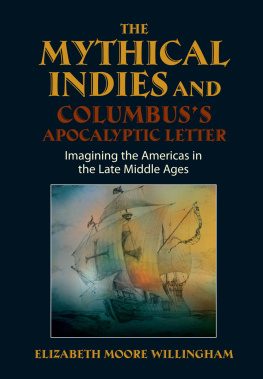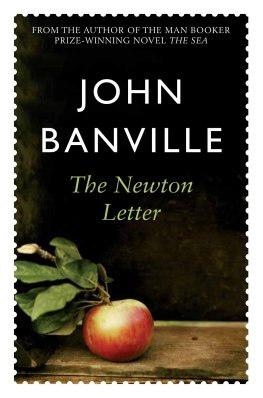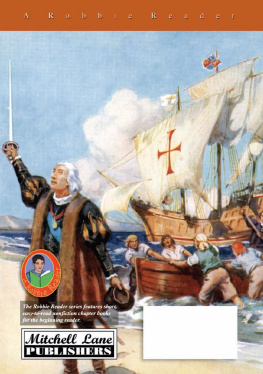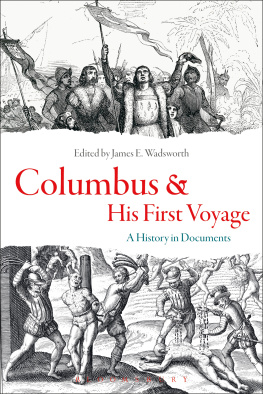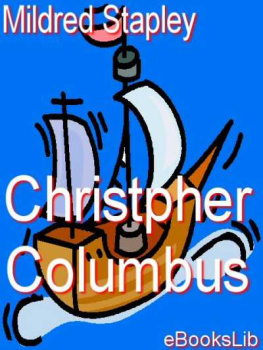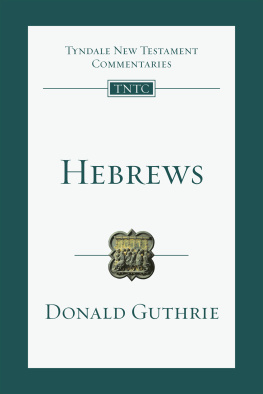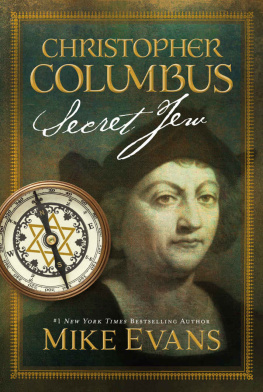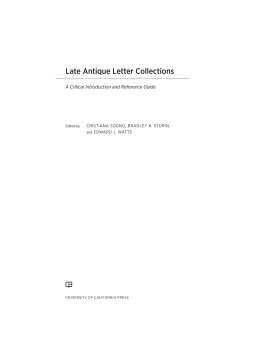
Portrait of Christopher Columbus attributed to Ridolfo Ghirlandaio, courtesy of the Galata Museo del Mare, Genoa.
The electronic book for The Mythical Indies and Columbuss Apocalyptic Letter features the full text, including all introductory materials, ancillaries, and the index, but we have chosen to include only one of the three facsimiles from the print book, where the facsimiles are collated on unnumbered pages. As most e-book readers are aware, the page display on a device may be distinct from the print-book page, and displays may be inconsistent from one device or library platform to another. These potential inconsistencies in delivery, useful feedback from academics, research in the literature, and primarily our concerns over readers success in using the facsimiles effectively in the e-book format have influenced this decision.
The uses and means of access offered by the print facsimiles of the folio and quarto printings of the Letter (the Folio and the Quarto, respectively) and of the Simancas manuscript will not translate well to the electronic version, and electronic facsimiles, particularly those of the Quarto, set in landscape, and the Simancas MS, with its difficult hand and conventions, would, instead, create an ineffective and ultimately frustrating experience for the e-book user.
The print versions of the facsimiles offer certain inherent challenges to print readers, too, because of their late-medieval language and scribal-culture conventions and the surface losses to the originals. These challenges are more readily mediated for readers of the print facsimiles, who are able to view the facsimile pages whole and at full size not necessarily at original size on a surface where they can track the (sometimes wavering) lines of text by line number across the full view of the page. The print format also allows readers to move more easily between lines of the edited text and translation and those points on the facsimiles, as well as between critical discussions of words and phrases and the facsimiles. The e-book (human) reader who wishes to use the facsimiles in these ways, would be materially hampered.
For such practical and theoretical considerations as these, only the Folio facsimile is included in the e-book. Though the (human) reader may indeed encounter some difficulty in using the Folio facsimile in the electronic format, depending on the device or platform in use, the Folio facsimile, of the three available in the print book, can be expected to offer the most accessible and useful images on a device, and it is the primary basis of the book. Its images are also widely available online in older, recently digitized books and on certain websites, and these may be useful for classroom display or private study using e-book.
* * *
With his Letter of 1493 to the court of Spain, Christopher Columbus heralded his first voyage to the present-day Americas, creating visions that seduced the European imagination and birthing a fascination with those new lands and their inhabitants that continues today. Columbuss epistolary announcement travelled from country to country in a late-medieval media event and the rest, as has been observed, is history.
The Letter has long been the object of speculation concerning its authorship and intention: British historian Cecil Jane questions whether Columbus could read and write prior to the first voyage, while Demetrio Ramos argues that King Ferdinand and a minister composed the Letter and had it printed as the Spanish folio. The Letter has figured in studies of Spanish Imperialism and of Discovery and Colonial period history, but it also offers insights into Columbuss passions and motives as he reinvents himself and retails his vision of Peter Martyrs Novus orbis to men and women for whom Columbus was as unknown as the places he claimed to have visited.
The central feature of the book is its annotated variorum edition of the Spanish Letter, together with an annotated English translation and word and name glossaries. A list of terms from early print-period and manuscript cultures supports the books critical discussions. In the context of her text-based reading, the author addresses earlier critical perspectives on the Letter, explores foundational questions about its composition, publication and aims, and proposes a theory of authorship grounded in text, linguistics, discourse, and culture.
Elizabeth Moore Willingham is a medievalist, text scholar, and Romance linguist. She is series editor for the Old French Lancelot of Yale 229 for Brepols and has published critical work in Latin American fiction and film, including Laura Esquivels Mexican Fictions (Sussex 2010). She is Associate Professor in the Department of Modern Foreign Languages at Baylor University where she teaches Old Spanish, Romance Linguistics, and Hispanic literature and film.
* * *
Copyright Elizabeth Moore Willingham, 2015.
Published in the Sussex Academic e-Library, 2015.
SUSSEX ACADEMIC PRESS
PO Box 139
Eastbourne BN24 9BP, UK
and simultaneously in the United States of America and Canada
All rights reserved. Except for the quotation of short passages for the purposes of criticism and review, no part of this publication may be reproduced, stored in a retrieval system or transmitted in any form or by any means, electronic, mechanical, photocopying, recording or otherwise, without the prior permission of the publisher.
British Library Cataloguing in Publication Data
A CIP catalogue record for this book is available from the British Library.
Library of Congress Cataloging-in-Publication Data
Willingham, Elizabeth M. (Elizabeth Moore)
The mythical Indies and Columbuss apocalyptic letter : imagining the Americas in the late Middle Ages / Elizabeth Moore Willingham.
pages cm
Includes bibliographical references and index.
ISBN 978-1-84519-700-1 (hardback : acid-free paper)
ISBN 978-1-84519-701-8 (pbk : acid-free paper)
ISBN 978-1-78284-037-4 (e-pub)
ISBN 978-1-78284-038-1 (e-mobi)
ISBN 978-1-78284-039-8 (e-pdf)
1. Columbus, Christopher. Carta (Feb. 18, 1493) 2. AmericaEarly accounts to 1600. 3. Columbus, ChristopherCorrespondence. 4. ExplorersAmericaCorrespondence. 5. ExplorersSpain Correspondence. 6. AmericaDiscovery and explorationSpanish Sources. I. Columbus, Christopher. Carta (Feb. 18, 1493). English & Spanish. II. Title.
E115.3.W452015
970.015092dc23
2014037593
This e-book text has been prepared for electronic viewing. Some features, including tables and figures, might not display as in the print version, due to electronic conversion limitations and/or copyright strictures.
* * *
This book is dedicated to Bobby and Carol Ann and to Carlos and Yolanda for all good reasons.
CONTENTS
ILLUSTRATIONS AND FACSIMILES
F RONTISPIECE
P LATE S ECTIONS
T EXT I LLUSTRATIONS
ACKNOWLEDGMENTS
Borrowing from an affirmation expressed by Tennessee Williams, spoken on screen by Vivian Leigh, and echoed by the late Valerie J. Flint in her book on Columbus, I affirm that this project is deeply indebted to the generosity of many people, some of them old friends or valued colleagues, and others whose time and expertise was given as cordially as if they had been.
I wish to acknowledge the following for their support with essential materials and/or their excellent guidance and advice: Isabel Aguirre Landa, Director of the Reference Department of the Archivo General de Simancas (AGS), for her knowledgeable, gracious, and efficient handling of my requests and questions about the Simancas manuscript and Luis de Santngel; Eric Frazier, Reference Librarian for the Rare Book and Special Collections Division of the Library of Congress of the United States, for his guidance and accommodation in the Library and for many useful electronic files for study related to this project; Mark Dimunation, Chief of the Rare Book and Special Collections Division at the Library of Congress, for generously sharing with me his expertise on some of the Librarys Columbus materials; Braulio Vzquez, Jefe de Seccin, Archivo General de Indias (AGI), for his able and informative assistance with inquiries concerning Juan de Sanfelices; Inmaculada Delgado of the AGS for her helpful research and correspondence on Luis de Santngel; ngel J. Moreno Prieto, Jefe de Seccin de Archivos, Departamento de Referencias of the AGS for his kind and able assistance in confirming matters related to the letter from Luis de la Cerda, the first Duke of Medinaceli; Antonio Snchez de Mora, Jefe de Seccin de Archivos, for his indispensable guidance in accessing the
Next page
